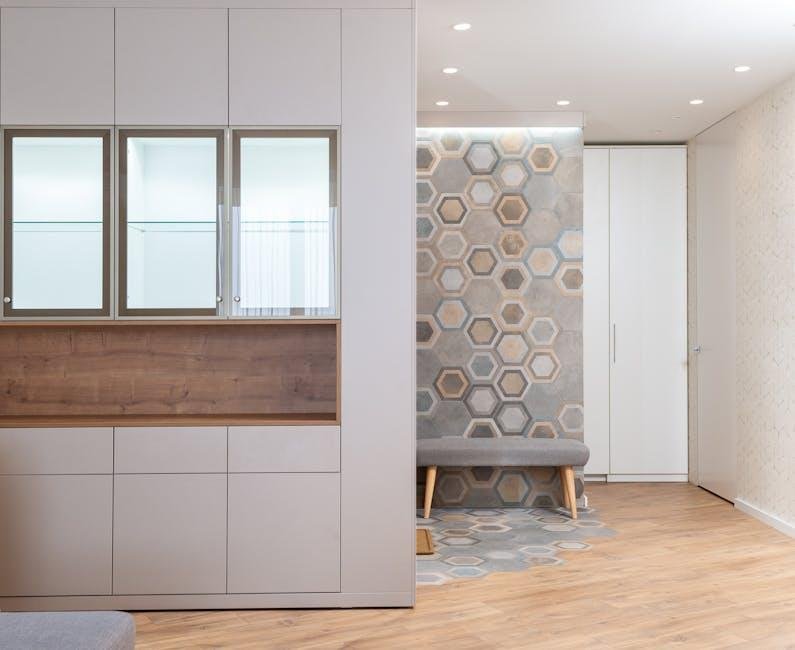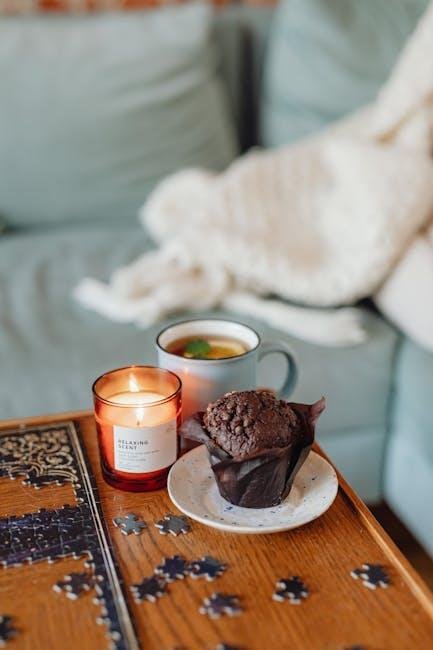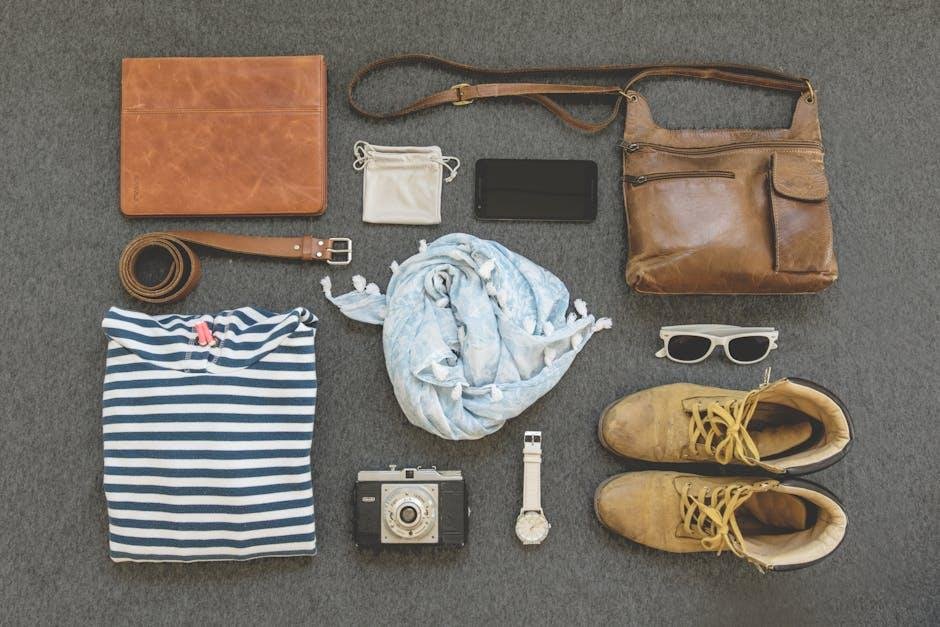In the realm of interior design, the art of furniture placement is often the unsung hero that transforms a house into a home. For those who cherish the timeless elegance of traditional aesthetics, the arrangement of furniture is not merely a practical concern but a harmonious dance that invites comfort and sophistication. Imagine rooms that exude warmth, where every piece whispers a story, and where the careful arrangement of sofas, chairs, and tables draws the eye in and beckons one to linger. This article will explore the principles and nuances of furniture placement that can effortlessly evoke a traditional ambiance, guiding you through techniques that marry functionality with classic charm. Whether you’re revamping a room or starting from scratch, understanding the subtle interplay of space, scale, and style will empower you to create an inviting habitat steeped in heritage and grace.let’s embark on this journey of revelation and see how the placement of furniture can transform the essence of your living space.
Understanding the Principles of Symmetry in Traditional Furniture Layout
In traditional furniture layouts, symmetry serves as the backbone for creating a harmonious and balanced space. The eye naturally gravitates toward symmetrical arrangements,which evoke a sense of order and tranquility. To achieve this, consider placing matching chairs on either side of a prominent piece, such as a coffee table or fireplace. by pairing furniture pieces of similar shapes, sizes, or colors, you can establish a sense of coherence while also enhancing the aesthetic appeal of your room.
Additionally, detailing your space with symmetrical accessories can amplify the overall effect. Incorporate elements like framed art, vases, or table lamps in even numbers and at equal distances to reinforce the visual symmetry. A well-thought-out layout might include a central focal point flanked by two identical side tables,each adorned with a decorative item. To illustrate how these principles come together, consider the following key aspects:
| Symmetrical Elements | Example Placement |
|---|---|
| Chairs | On either side of the living room sofa |
| Side tables | Next to a central sofa or bed |
| Artwork/Vases | On a shelf or above a mantelpiece |

Choosing the Right Furniture Pieces to Enhance Classical Aesthetics
when aiming to achieve a traditional look within your home, selecting the right furniture pieces is crucial. Each item should reflect the elegance and charm characteristic of classical aesthetics. Focus on materials like solid woods, rich fabrics, and intricate designs to create a space that feels timeless. Consider incorporating the following key elements:
- Antique or Vintage Accents: pieces that carry history will add depth and character.
- Traditional Upholstery: Fabrics such as damask, velvet, or brocade can elevate your decor.
- Curvilinear Furniture: Opt for sofas and chairs with flowing lines that exude sophistication.
Moreover, the placement of these pieces should enhance the overall harmony of your environment. As an example, arrange your seating to facilitate conversation while ensuring views of focal points like a fireplace or an ornate mantelpiece. Think about integrating classical design elements such as:
- Coffered Ceilings: These draw the eye upward and add a rich architectural feel.
- Symmetrical Arrangements: Balance is key in creating a welcoming atmosphere.
- Accentuated Lighting: Utilize chandeliers or sconces that reflect the elegance of the furnishings.

Creating Focal Points with heritage-Inspired Arrangements
Incorporating heritage-inspired arrangements can dramatically enhance the aesthetic of a traditionally styled space. Start by selecting a central piece that embodies the essence of classic design,such as a vintage armchair or an ornate coffee table. Placing this piece strategically in the room not only draws attention but also sets the tone for the rest of the decor. Surround it with complimentary elements to create a cohesive look. consider adding other items that reflect the same era or style, such as:
- Intricately patterned rugs
- Antique light fixtures
- Ornamental vases
- artwork with historical significance
Additionally, layering textures contributes significantly to the warmth of the space. For instance, a soft wool throw over an elegant settee can invite comfort, while mixing metals in decorative accents can add dimension. To help visualize the arrangement of these elements, here’s a simple table suggesting potential layouts that enhance focal points:
| Layout Option | Description |
|---|---|
| Symmetrical Arrangement | Pairing furniture and accents evenly on both sides of the focal point for a balanced look. |
| Asymmetrical arrangement | Creating visual interest by varying the size and shape of decor items around the focal point. |
| Layered Look | Using different heights and textures to create a three-dimensional arrangement that draws the eye. |

Incorporating Accessories and textiles for a Cohesive Traditional Look
to cultivate a warm and inviting traditional aesthetic, carefully selected accessories and textiles play a pivotal role. Consider incorporating elegant throw pillows with rich fabrics such as velvet or brocade in deep hues to add comfort and style to your seating. Additionally, handwoven rugs beneath furniture not only define areas but also infuse the space with texture and warmth. A selection of decorative vases or antique books can serve as perfect conversation starters, sitting atop console tables or mantels to enhance the traditional vibe. Layering these items creates depth, drawing the eye while providing a sense of harmony throughout the room.
Textiles are also crucial in unifying the overall look. Using drapery with intricate patterns can frame windows beautifully, allowing natural light to filter through while maintaining an air of elegance. Incorporate table linens that mirror your chosen color palette to tie dining areas together. Consider a mix of materials for a balanced feel—soft linens complemented by sturdy upholstery can definitely help maintain both comfort and sophistication. Below is a simple table outlining complementary accessories and textiles to consider:
| Accessory/Textile | Description |
|---|---|
| Throw Pillows | Rich fabrics and textures to enhance seating areas. |
| Woven Rugs | Define spaces while adding warmth. |
| Drapery | Elegant patterns to frame windows. |
| Table linens | Coordinated to enhance dining experiences. |
The Conclusion
achieving a traditional look in your home through thoughtful furniture placement is an art that blends functionality with aesthetic appeal. By considering proportions, focal points, and harmonious arrangements, you can create a space that not only honors classic design principles but also tells a personal story. Remember that each piece of furniture contributes to the overall narrative of your home, inviting warmth and comfort while maintaining a timeless elegance.so, take the time to explore, experiment, and find that perfect balance—you hold the brush to your own canvas. Embrace the inviting charm of traditional design, and let your living spaces reflect a harmony of history and modern life. Happy decorating!



